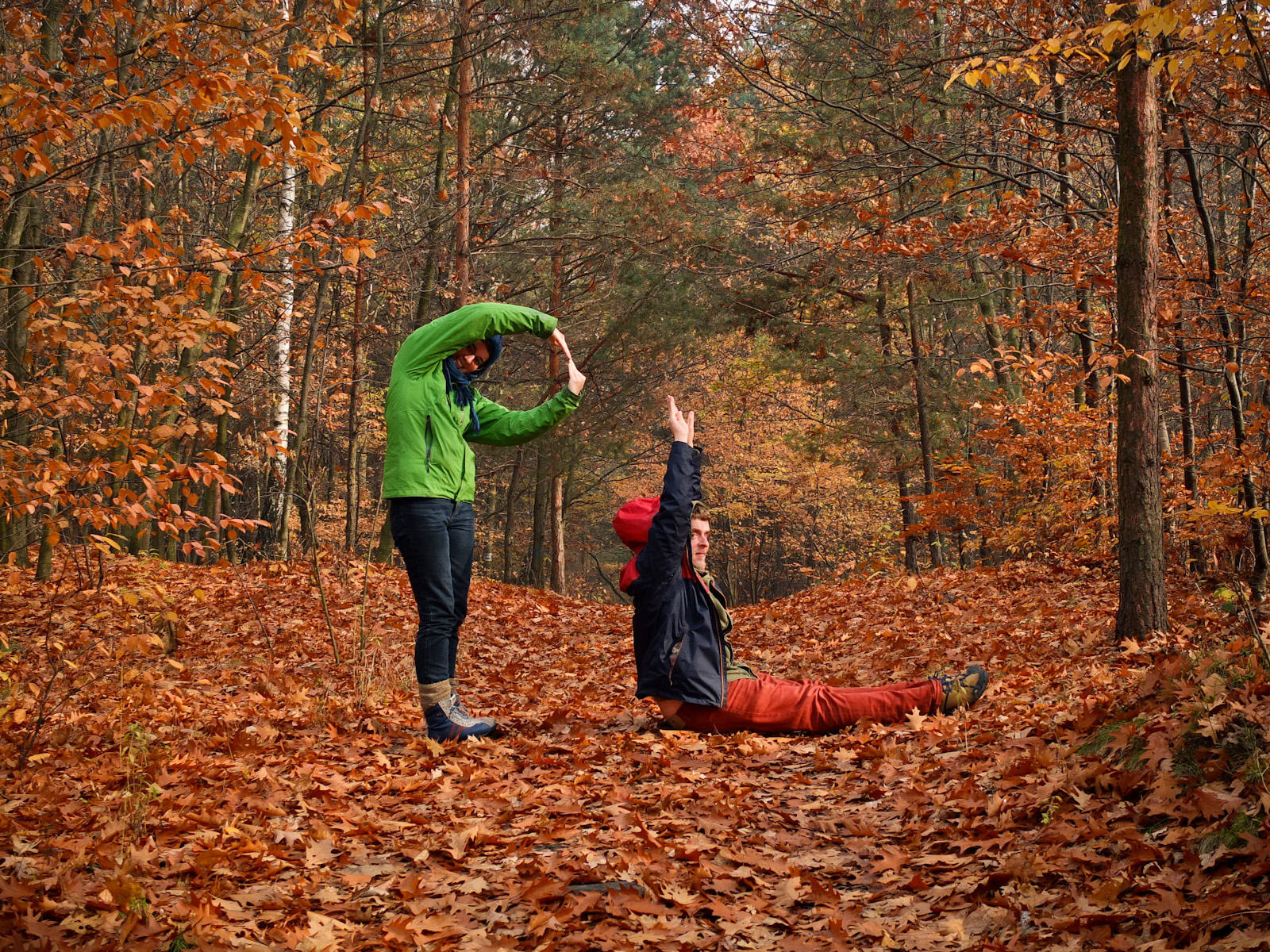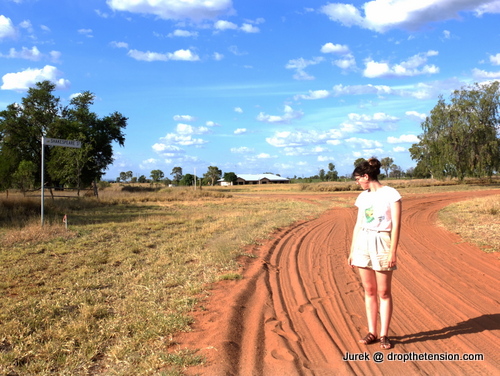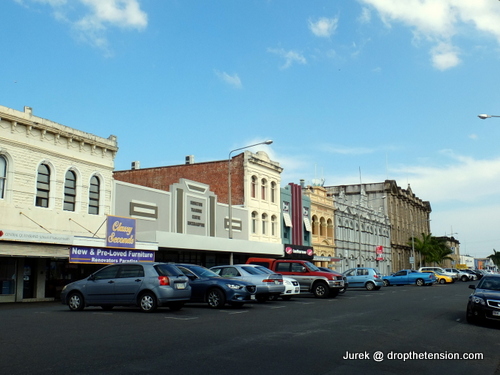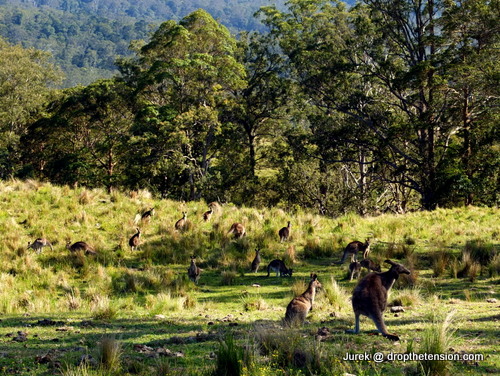
Australia as a country
Australia’s really upside-down. The sun shines from the north, the stars are upside-down, mammals carry bags on their bellies, trees loose bark in the winter which takes place during the summer and wine is cheaper than beer. But is it really such a different place?
Before coming here, I had a vague image of Australia as of a major modern country with big cities, skyscrapers, happy people, fascinating nature, Aborigines, kangaroos, surfers… I knew it occupies a whole continent, so I was automatically assuming it’s a kind of empire of its own – like a less expansive version of America. I was expecting a really big nation, strong, proud of their achievements; I was expecting a country with dense infrastructure, with big, modern cities comparable to Paris, Berlin, New York, Singapore. Cities with extensive public transport, modern museums, state of the art infrastructure, clubbing, parks, all the things you expect from big, vibrant contemporary cities. Also, I was expecting a network of smaller cities like Leeds, Lyon, Dresden, Helsinki, with their less vibrant yet still lively faces.
I was expecting a strong national psyche, I was expecting many people being ignorantly closed (as citizens of empires tend to be), welcoming me to their great continent-state. I was expecting a nation too big, strong and busy to pay attention to some guy from Eastern Europe.
Well, I was quite wrong.
1. Australia is a normal country
It really is. It’s a country with a population a little bigger than Romania. It’s a country that does have a couple of big cities but it also has real shitholes. It’s got towns with one shop and a post office, if lucky. If you dig deep enough, you’ll find towns where the asphalt covers only the main street and only until the last building in each direction.
In Australia, if you go out of the city, you’ll soon lose mobile signal. And when you’ll get to a small town, even one in the centre of happenings, you might get your mobile coverage back, but you’ll also get people approaching you on the street just to ask where you’re from. And if your answer is different from Western Europe, USA, Israel, Russia or Brazil, they’ll likely not know where or what your country is. Two days ago one guy couldn’t understand how Poland can be east of Germany, he claimed there’s a sea there.
Australians do not think they’re a part of a big, vibrant, unique nation. They’re rather thinking they’re a small country, a small country at the end of the world. Thus, they welcome you as something new and fresh, or at least with a smile, sometimes one that covers a thought resonating in their head: “where the fuck is that place?”
It’s not because they’re stupid, though. It’s also not because they think their country is the best place in the world and the only one that matters. It’s because they’re a small nation so far from everything else.
2. Australia is totally not a normal country
It’s really not. It’s a country bigger than the whole European Union and India together! Plus, it really doesn’t have almost any small cities and big towns.
14 out of 23 million Australians live in the country’s 5 biggest cities. Most of the other ‘cities’ (population 200-500 thousands) are groups of suburbs joined together without any real centre, except shopping centres of course. They’re also just outside big cities like Sydney or Brisbane, being partly weekend getaways, partly satellite bases for industry and universities.
The only exception is Canberra. Don’t be mislead that it’s the European kind of city in Australia though – it’s an entirely artificial one, built from scratch a hundred years ago when the government couldn’t decide which of the two biggest cities (Melbourne or Sydney) should become the capital of the new country. Nobody lives in Canberra unless they have a governmental job or study at a local university.
All the other towns have populations smaller than 200 thousand and are located in places crazy far from anything. For example, I am now in the state of Queensland, its capital Brisbane is located just in the south-east corner of it. I’m about 700km north of it, while the whole east coast of Queensland is about 2,500km long. Imagine the scale, I’m about quarter the way north from the state’s centre of population. And there’s absolutely nothing here. Two towns of 80 thousand people in the area, five asphalt roads – three south to north and two east to west. The nearest bigger place to the south is Sunshine Coast, 550 km away (they consider the 6 hours drive there a short distance), to the north it’s Townsville, 700 km away, and to the west it’s Darwin, 2900 km away.
Now imagine. A country almost twice bigger than EU, bigger than mainland USA, inhabited by a population similar to that of Romania or Florida, with 60% of it living in the 5 biggest cities (comparing, it’s 4% and 6% in EU and US respectively). What do we get as a result? Incredible, unimaginable vastness, emptiness, huge distances, wilderness, thousands of kilometres of unpaved roads with no mobile coverage, towns completely cut off from the rest of the world, deserts, jungles and MORE KANGAROOS THAN PEOPLE.









Well …as to: ” and MORE KANGAROOS THAN PEOPLE.”
In terms of sustainability it is 6 times overpopulated 🙂
So, is there a ‘sustainable population density ratio’?
Well.. yes.. the term that describes this number is “carrying capacity” of an habitat.
Exceeding this number means using out resources in a manner that does not allow its regeneration which leads to depletion thus render it being unsustatinable.
The constatnt growth of # of ppl in a finite habitat means extintion for other species…
thanks for the info!
Pingback: We made it: Australia to Poland NO FLIGHTS! • Drop the tension!
Pingback: Aussies • Drop the tension!